BMW i7 vs Volvo EX90 – Which one offers the better deal?
Two cars, one duel: BMW i7 meets Volvo EX90.
Which one wins in performance, efficiency and value for money? Find out now!
Costs and Efficiency:
Looking at overall running costs, both models reveal some interesting differences in everyday economy.
Volvo EX90 has a distinct advantage in terms of price – it starts at 73700 £, while the BMW i7 costs 99200 £. That’s a price difference of around 25466 £.
In terms of energy consumption, the advantage goes to the Volvo EX90: with 17.80 kWh per 100 km, it’s barely noticeable more efficient than the BMW i7 with 18.50 kWh. That’s a difference of about 0.70 kWh.
As for range, the BMW i7 performs minimal better – achieving up to 624 km, about 4 km more than the Volvo EX90.
Engine and Performance:
Power, torque and acceleration are the classic benchmarks for car enthusiasts – and here, some clear differences start to show.
When it comes to engine power, the Volvo EX90 has a barely noticeable edge – offering 680 HP compared to 659 HP. That’s roughly 21 HP more horsepower.
In acceleration from 0 to 100 km/h, the BMW i7 is to a small extent quicker – completing the sprint in 3.70 s, while the Volvo EX90 takes 4.20 s. That’s about 0.50 s faster.
In terms of top speed, the BMW i7 performs noticeable better – reaching 250 km/h, while the Volvo EX90 tops out at 180 km/h. The difference is around 70 km/h.
There’s also a difference in torque: BMW i7 pulls noticeable stronger with 1100 Nm compared to 870 Nm. That’s about 230 Nm difference.
Space and Everyday Use:
Beyond pure performance, interior space and usability matter most in daily life. This is where you see which car is more practical and versatile.
Seats: Volvo EX90 offers evident more seating capacity – 7 vs 5.
In curb weight, Volvo EX90 is slight lighter – 2556 kg compared to 2595 kg. The difference is around 39 kg.
In terms of boot space, the BMW i7 offers clearly perceptible more room – 500 L compared to 324 L. That’s a difference of about 176 L.
When it comes to payload, Volvo EX90 slight takes the win – 585 kg compared to 535 kg. That’s a difference of about 50 kg.
Who wins the race?
The BMW i7 proves to be edges out slightly and therefore becomes our DriveDuel Champion!
BMW i7 is the better all-rounder in this comparison.

BMW i7
BMW i7
The new BMW i7 epitomises luxury and innovation, seamlessly blending advanced technology with elegant design. Its interior offers an unparalleled experience, with premium materials and cutting-edge features that create a tranquil yet engaging atmosphere for both driver and passengers. The i7's performance is both dynamic and efficient, demonstrating BMW's commitment to sustainable driving without compromising on the exhilarating drive the brand is known for.
details @ press.bmwgroup.com
@ press.bmwgroup.com
 @ press.bmwgroup.com
@ press.bmwgroup.com
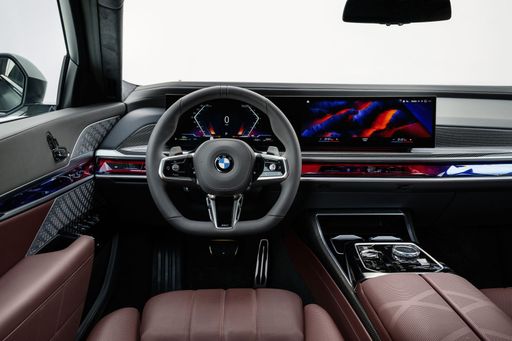 @ press.bmwgroup.com
@ press.bmwgroup.com
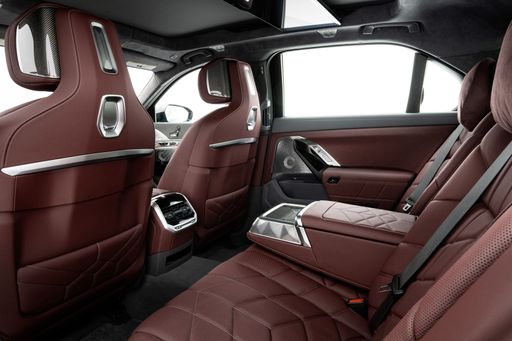 @ press.bmwgroup.com
@ press.bmwgroup.com
Volvo EX90
The Volvo EX90 represents a new era of luxury electric vehicles, combining sophisticated design with cutting-edge technology. Its interior offers a serene environment, enhanced by premium materials and a state-of-the-art infotainment system that ensures both comfort and connectivity. Safety remains paramount, with the EX90 featuring advanced driver assistance features to provide peace of mind on every journey.
details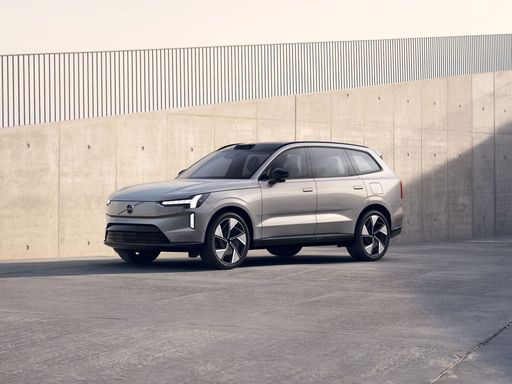 @ media.volvocars.com
@ media.volvocars.com
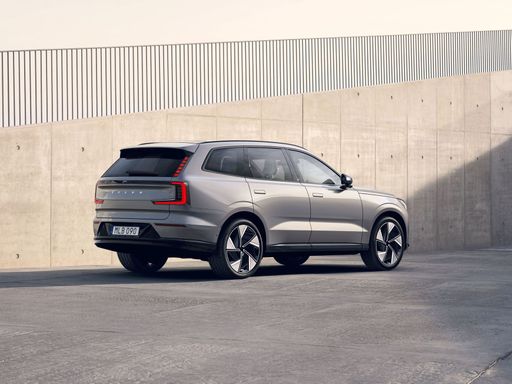 @ media.volvocars.com
@ media.volvocars.com
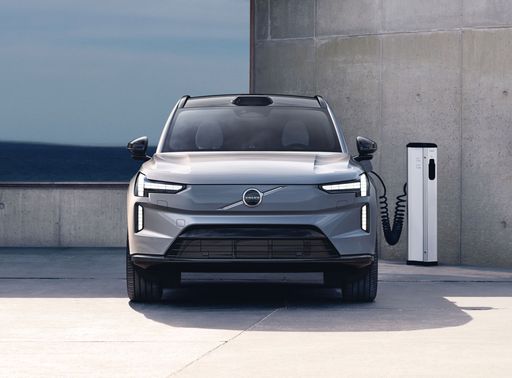 @ media.volvocars.com
@ media.volvocars.com
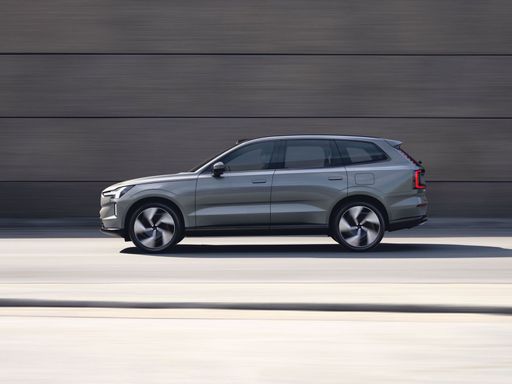 @ media.volvocars.com
@ media.volvocars.com
 @ media.volvocars.com
@ media.volvocars.com
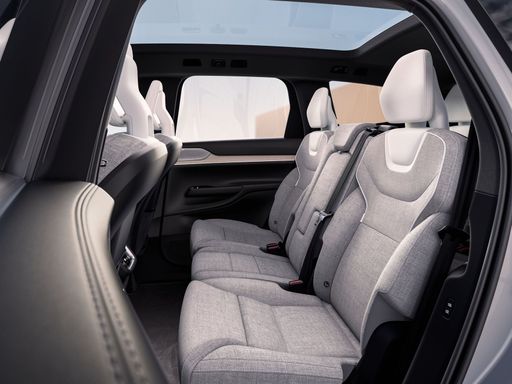 @ media.volvocars.com
@ media.volvocars.com

|

|
|
|
|
Costs and Consumption |
|
|---|---|
|
Price
99200 - 157000 £
|
Price
73700 - 94100 £
|
|
Consumption L/100km
-
|
Consumption L/100km
-
|
|
Consumption kWh/100km
18.5 - 20.8 kWh
|
Consumption kWh/100km
17.8 - 19.3 kWh
|
|
Electric Range
559 - 624 km
|
Electric Range
570 - 620 km
|
|
Battery Capacity
101.70 kWh
|
Battery Capacity
88 - 102 kWh
|
|
co2
0 g/km
|
co2
0 g/km
|
|
Fuel tank capacity
-
|
Fuel tank capacity
-
|
Dimensions and Body |
|
|---|---|
|
Body Type
Sedan
|
Body Type
SUV
|
|
Seats
5
|
Seats
6 - 7
|
|
Doors
4
|
Doors
5
|
|
Curb weight
2595 - 2770 kg
|
Curb weight
2556 - 2764 kg
|
|
Trunk capacity
500 L
|
Trunk capacity
324 L
|
|
Length
5391 mm
|
Length
5037 mm
|
|
Width
1950 mm
|
Width
1964 mm
|
|
Height
1544 mm
|
Height
1744 mm
|
|
Max trunk capacity
-
|
Max trunk capacity
2082 - 2135 L
|
|
Payload
480 - 535 kg
|
Payload
375 - 585 kg
|
Engine and Performance |
|
|---|---|
|
Engine Type
Electric
|
Engine Type
Electric
|
|
Transmission
Automatic
|
Transmission
Automatic
|
|
Transmission Detail
Reduction Gearbox
|
Transmission Detail
Reduction Gearbox
|
|
Drive Type
Rear-Wheel Drive, All-Wheel Drive
|
Drive Type
Rear-Wheel Drive, All-Wheel Drive
|
|
Power HP
455 - 659 HP
|
Power HP
333 - 680 HP
|
|
Acceleration 0-100km/h
3.7 - 5.5 s
|
Acceleration 0-100km/h
4.2 - 6.8 s
|
|
Max Speed
205 - 250 km/h
|
Max Speed
180 km/h
|
|
Torque
650 - 1100 Nm
|
Torque
480 - 870 Nm
|
|
Number of Cylinders
-
|
Number of Cylinders
-
|
|
Power kW
335 - 485 kW
|
Power kW
245 - 500 kW
|
|
Engine capacity
-
|
Engine capacity
-
|
General |
|
|---|---|
|
Model Year
2022 - 2023
|
Model Year
2025
|
|
CO2 Efficiency Class
A
|
CO2 Efficiency Class
A
|
|
Brand
BMW
|
Brand
Volvo
|
Is the BMW i7 offered with different drivetrains?
Available configurations include Rear-Wheel Drive or All-Wheel Drive.
The prices and data displayed are estimates based on German list prices and may vary by country. This information is not legally binding.
